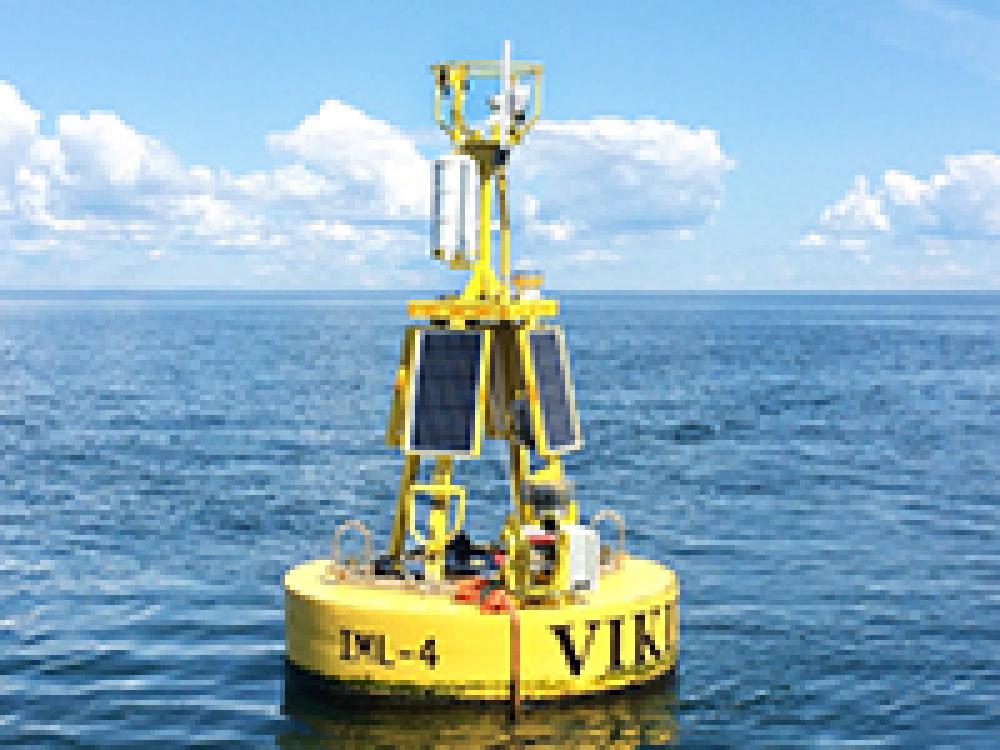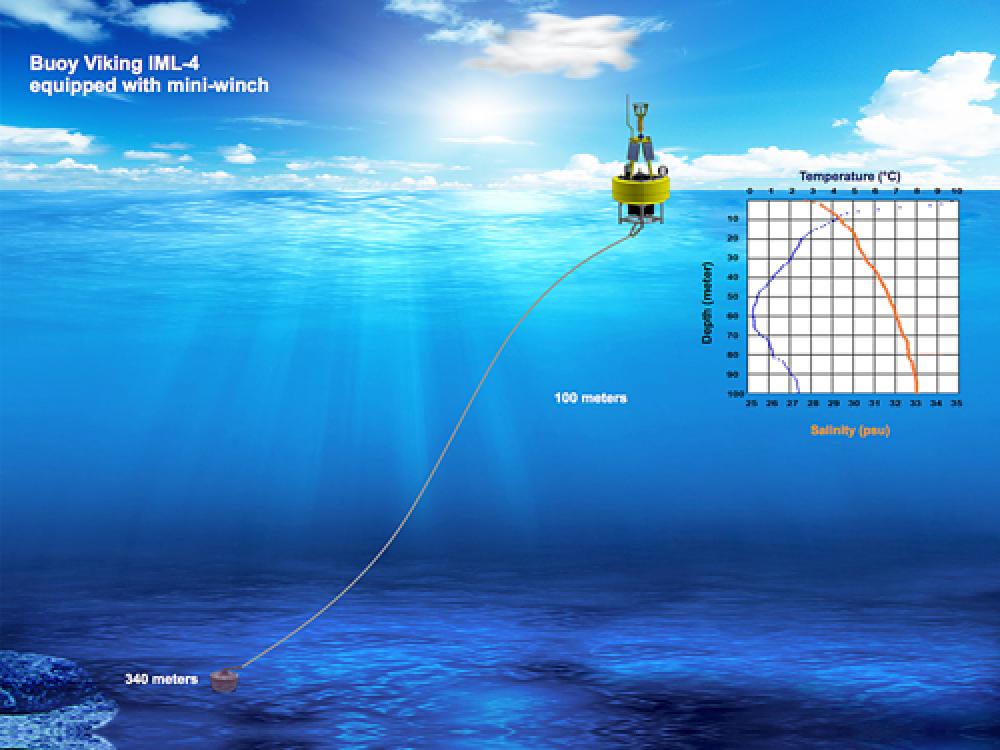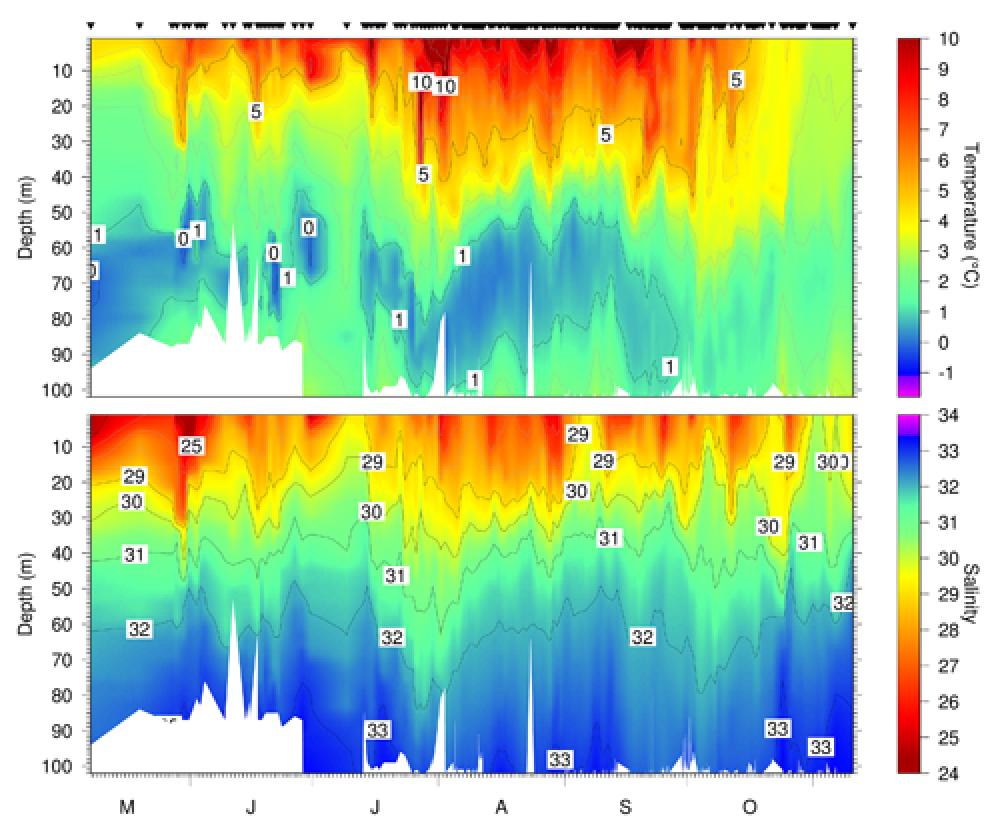
Gathering Scientific Information from a Buoy
Oceanography is a science that requires a lot of information to properly understand the structure and inner workings of complex marine systems, such as the Estuary and Gulf of St. Lawrence. However, it is not easy to obtain temperature and salinity data at any time, far below the surface of the water, many kilometres offshore. The usual method requires a sensor to be deployed from a boat during good weather conditions, which often entails significant costs.
This is why a technical team from the Maurice-Lamontagne Institute at Fisheries and Oceans Canada (DFO), in partnership with a company specialized in electronics, has designed and developed a system that independently acquires temperature and salinity profiles without human intervention from a Viking scientific buoy. Data can then be downloaded from the buoy remotely in real time. Until now, no similar product had been available on the market that could be deployed on a scientific buoy.
The system is composed of a mini winch equipped with an electromechanical cable, a temperature and salinity probe (slightly modified Seabird 49), and a docking station. The mini winch is also equipped with its own electronic controller, which in turn is operated by the buoy's main controller. The user can program the system remotely to adjust various parameters, such as the probe's deployment frequency or desired depth. Other parameters that can also be programmed - wave conditions, the speed of the currents, the buoy's drift speed and the operating voltage of the buoy's batteries - include limits beyond which the system will not deploy to avoid damage.
The new system was deployed in spring 2015 onboard the Viking scientific buoy IML‑4. Located off Rimouski, it sampled temperature and salinity profiles from May to November. Data obtained from this new system (see Figure) show the strong variability of the presence of cold intermediate waters (with temperatures below 1°C), water column variability associated with the 14-day tidal spring-neap cycle, and the formation of the surface mixed layer in the fall. These data will be very useful in understanding and quantifying the physical processes that control oceanographic conditions in the Estuary, as well for the annual evaluation of the state of the ocean. Identical systems will be installed next summer on other DFO buoys deployed in the Gulf of St. Lawrence.
Roger Pigeon and Peter Galbraith
Science

Buoy Viking IML-4


Temperature (top panel) and salinity (bottom panel) measured from May to November 2015 at the Rimouski station from the Viking oceanographic buoy IML 4. The triangles above the figure correspond to the 769 profiles made.





